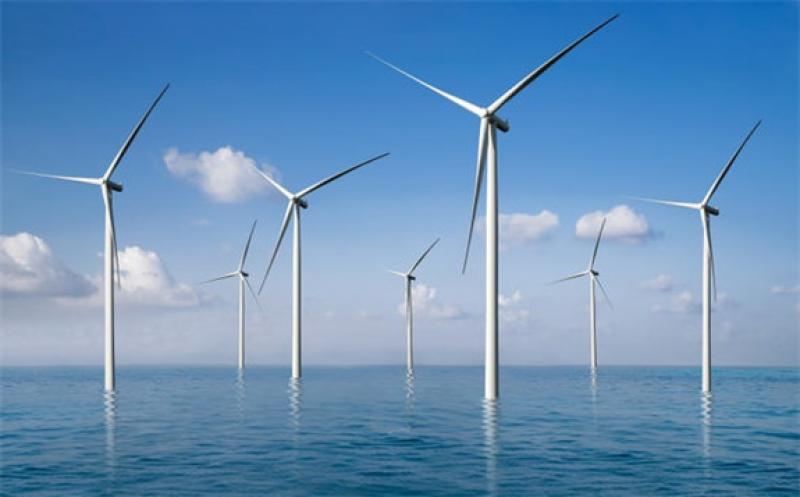
Longer wind turbine blades over the last decade have allowed wind developers to produce more power without making turbines taller and could continue to drive future growth in the industry.
But it may not do much to placate locals who are upset about the increasing visibility of those turbines.
The increase in average blade size is a main determinant of what scientists refer to as a turbine’s “swept area”—essentially, the size of the circular path traveled by the blades.
Since 2009, the average swept area of a turbine has doubled, thanks to 20% longer blades, Energy Department researchers said on a webinar yesterday.
That has allowed today’s turbines to capture more of the wind that flows past, making them far more efficient and slashing the cost of their energy by as much as 50% on wholesale markets.
“Much more progress is possible on that front,” said Mark Bolinger, a research scientist at Lawrence Berkeley National Laboratory.
That may be particularly true in regions where there’s lots of wind energy already, like Texas and the Midwest, or in parts of New England where transmission is constrained, since power lines tend to be used more where turbines are more efficient.
“There’s clearly more to be gained by a continuation of this trend,” he said.
The length of the blades is the most marked difference in recent turbine engineering, according to researchers. Average turbine heights, for instance, have seen comparable “modest” growth of 12% over the last decade, according to Bolinger and his colleagues from LBNL and the National Renewable Energy Laboratory.
But collectively, those changes can also make it harder to get permits for wind farms, they acknowledged.
Taller turbines can move into airspace traversed by planes, the researchers said. Longer blades can interfere in similar ways, while producing more noise and requiring more land area to operate.
They also can lengthen the permitting process and cause conflict with residents who think of them as a blemish on the landscape.
On Maryland’s Eastern Shore, for example, officials in the resort town of Ocean City are pressing state regulators to reject projects by two offshore wind companies after the companies amended their plans to incorporate GE Renewable Energy’s Haliade-X turbine—the tallest model in the world (Energywire, Jan. 24).
In western Virginia, county supervisors are studying whether to amend local zoning laws to benefit the first onshore wind farm in the state, after developers Apex Clean Energy asked to use 700-foot turbines rather than the 500-foot versions first proposed.
Still, researchers at national labs are trying to develop machines that are both taller and longer bladed.
The Advanced Research Projects Agency-Energy has funded one study into an “ultra-large” 50-megawatt turbine—about four times as powerful as GE’s Haliade-X, though only about 75 feet taller.
Other Energy Department-funded teams are aiming to develop turbines that face downwind, allowing for longer blades, or to make blades more flexible so that longer types can be bent and transported more easily over land.
But in a report released alongside the webinar, Bolinger and his colleagues wrote that it’s uncertain which sort of technological advances will gain popularity throughout the industry.
In “more-seasoned wind development areas with better wind resources,” they said, companies appear to be moving toward higher-capacity turbines, but not those with the largest swept area.
Elongated blades tend to exert a greater physical toll on the rest of the turbine, in addition to making them harder to transport and causing issues with “social acceptance and regulatory hurdles”.
“In part because of these tradeoffs, the extent to which this recent trend ... will continue is far from certain,” the report said.